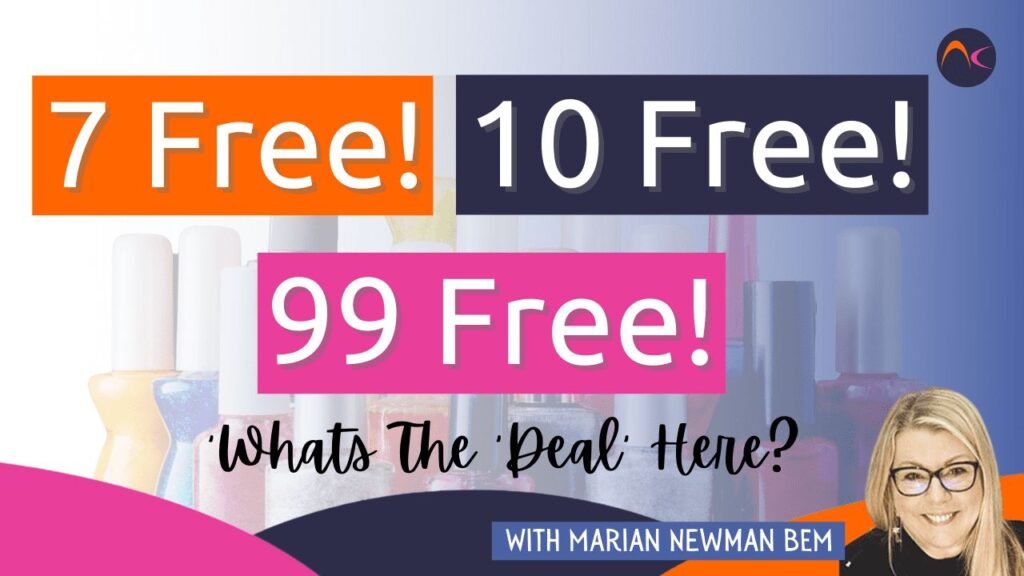There are SO many marketing stories on this whole ‘FREE’ issue. What are the facts?
One of the first facts is that traditional nail polish has been safely used for nearly 100 years! There have been some allergic reactions but this can happen with any product. There have been plenty of ‘hypoallergenic’ ranges over the years but, even these are not allergy free.
The choice of nail polish is most often based on colour, speed of drying and longevity. But in recent years many brands have put an emphasis on what ingredients the polish DOESN’T contain, hence the ‘5 free’, ‘7 free’, ‘10 free’ etc. This is mostly based on ‘fear-based marketing’. Virtually all of the ingredients included in these lists haven’t been used in nail polish for a long time. Some have been voluntarily removed for a variety of reasons. Others have been removed due to the ‘perceived risk’ by consumers.
Every ingredient in any cosmetic product is there for a reason. If one or more have been removed, then they have been replaced by an alternative.
Let’s look at some examples:
- Toluene. This is safe up to 25% but was voluntarily removed due to damage to the ozone layer. But it is still present in other disconnected products.
- DBP (dibutylpthalate). This has been used as a plasticiser but hasn’t been used for over 10 years. This is not because it is dangerous as the phthalates used in cosmetics are very safe. It is just that others are not so safe so it ‘by connection’.
- Formaldehyde. This is a gas; formalin is a liquid. There are many safe cosmetic ingredients that can release tiny amounts of formaldehyde e.g., preservatives. Indeed, formaldehyde is essential and needed by our bodies to make many other things in the body, including some proteins. It was used in nail polish as TSFR (tosylamide formaldehyde resin) to make the polish hard wearing. But the formaldehyde was at 0.005% so not harmful at all.
- Parabens. This was claimed to be an endocrine disrupter! There are many types of parabens, some of which are not allowed in cosmetics, while others are regulated for cosmetics. The safe types are in lots of cosmetic products.
- Ethyl tosylamide. This has been used as a film former in the past but there a silly myth that it can resist antibiotics! Not to mention, it is on the nail plate and does not enter the blood stream? It has been banned in the EU for many years.
- TPHP (triphenyl phosphate). This is a plasticizer when used in nail polish and there is no credible evidence to suggest otherwise. The very low amounts used are safe. for use in nail polish. This is one of the most ridiculous claims of all as there was an article published that ‘nail polish can make you fat’!! This additional document explains Doug Schoon’s explanation of this nonsense.
There are others so these examples are not exhaustive.
Some UV gels are also starting to claim the ‘x free’. But the ingredients that seem to fall into the commonly used list are not common ingredients for UV gels, only for traditional nail polish!
There are also marketing claims that say:
- Toxin free. This suggests that any other brand is full of toxins! No they are not!! Cosmetics are some of the safest products on the market as they are subject to so many regulations world-wide.
- Chemical free. NOTHING is chemical free! Not the air we breathe nor the water we drink. Everything with the exception of ‘energy’: heat and light, is made from a number of chemicals. WE are made of chemicals.
Another meaningless claim: ‘Not tested on animals’. Testing on animals was banned in the UK in 1998. Banned in the EU in 2013. China did test imports, but this was also banned in 2020. It is illegal sell cosmetics that have been tested on animals anywhere in the world.
Vegan? The VAST majority of nail products are vegan. There are a couple of exceptions. One is the pigment: carmine but this is rarely used as a red pigment. Keratin and lanolin can be sourced from sheep’s wool but the doesn’t harm the animal as their wool is shorn for the comfort of the sheep and for the use of wooden products. Some waxes are from bees but, again, the bee is not harmed, just like in the collection of their honey. But they are animal derived products.
Many brands do not even use these marketing claims. They don’t need to! It is a given for the vast majority! Education and understanding, as always, is key.
Instead of creating ‘fear-based marketing’ just to achieve a USP (unique selling point) shouldn’t we be looking instead of what products DO contain rather than what they don’t?


